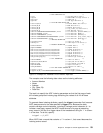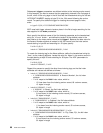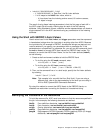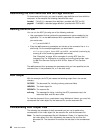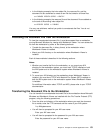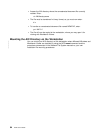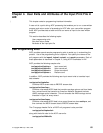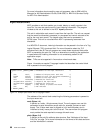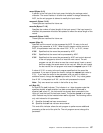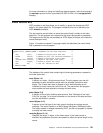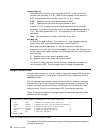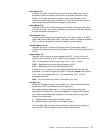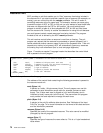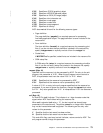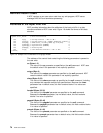record (Bytes 9–12)
A pointer to the first byte of the input record including the carriage control
character. The record resides in a buffer that resides in storage allocated by
ACIF, but the exit program is allowed to modify the input record.
reserved1 (Bytes 13–16)
These bytes are reserved for future use.
recordln (Bytes 17–18)
Specifies the number of bytes (length) of the input record. If the input record is
modified, this parameter must also be updated to reflect the actual length of the
record.
reserved2 (Bytes 19–20)
These bytes are reserved for future use.
request (Byte 21)
Specifies how the record is to be processed by ACIF. On entry to the exit
program, this parameter is X'00'. When the exit program returns control to
ACIF, this parameter must have the value X'00', X'01', or X'02', where:
X'00' Specifies that the record be processed by ACIF.
X'01' Specifies that the record not be processed by ACIF.
X'02' Specifies that the record be processed by ACIF and control returned
to the exit program to allow it to insert the next record. The exit
program can set this value to save the current record, insert a record,
and then supply the saved record at the next call. After the exit inserts
the last record, the exit program must reset the request byte to X'00'.
A value of X'00' on entry to the exit program specifies that the record be
processed. If you want to ignore the record, change the request byte value to
X'01'. If you want the record to be processed, and you want to insert an
additional record, change the request byte value to X'02'. Any value greater
than X'02' is interpreted as X'00', and the exit processes the record.
Note: Only one record can reside in the buffer at any time.
eof (Byte 22)
An End-Of-File (eof) indicator. This indicator is a 1-byte character code that
specifies whether an eof condition has been encountered. When eof is
signaled (eof value=‘Y’), the last record has already been presented to the
input exit, and the input file has been closed. The pointer record is no longer
valid. Records may not be inserted when eof is signaled. The following are the
only valid values for this parameter:
Y Specifies that eof has been encountered.
N Specifies that eof has not been encountered.
This end-of-file indicator allows the exit program to perform some additional
processing at the end of the print file. The exit program cannot change this
parameter.
Chapter 4. User Exits and Attributes of the Input Print File in AIX 67



